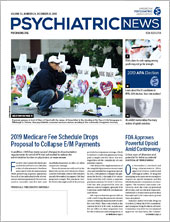On November 2, the Food and Drug Administration (FDA)
approved Dsuvia (sufentanil sublingual tablet, 30 micrograms) for managing acute pain severe enough to require an opioid analgesic and for which alternative treatments are inadequate. The decision came amid controversy over the risks of potential diversion and accidental exposure. Sufentanil is 10 times more potent than fentanyl and 1,000 times more potent than morphine.
Tensions flared over the drug on October 12, when the FDA’s Anesthetic and Analgesic Drug Products Advisory Committee voted 10-3 to recommend approval. Six days later, the committee’s chair, Raeford E. Brown Jr., M.D., who was unable to attend the committee’s vote, co-signed a strongly worded letter that the nonprofit consumer advocacy group Public Citizen sent to FDA officials to oppose approval.
In the letter, Brown, a professor of anesthesiology and pediatrics at the University of Kentucky College of Medicine in Lexington, lambasted current efforts at ensuring public safety with respect to opioids. “Briefly stated, for all of the opioids marketed in the last 10 years, there has not been sufficient demonstration of safety, nor has there been post-marketing assessment of who is taking the drug, how often prescribing is inappropriate, and whether there was ever a reason to risk the health of the general population by having one more opioid on the market,” he wrote.
“The agency feels that there is a capability, so far not demonstrated, to regulate [Dsuvia] so that it is used only in closely controlled settings. In order to have this happen, the education of all prescribers would need to be guaranteed. This has not been demonstrated with any other opioid, and given the lack of teeth in the current risk evaluation and mitigation strategies [REMS] for opioids, there is currently no educational nor regulatory scheme that will guarantee that this drug will be used only as described in the label,” he added.
In a
statement released on November 2, FDA Commissioner Scott Gottlieb, M.D., sought to address concerns over the FDA’s decision. He explained that Dsuvia will not be available for home use, should be used for 72 hours only, and should be administered only by a health care professional. To reduce the risk of exposure, Dsuvia is delivered through a disposable, single-dose applicator, he added.
Gottlieb also noted that Dsuvia could be used on the battlefield and said that the Department of Defense (DoD) “worked closely with the sponsor” on the drug’s development.
“This opioid formulation, along with Dsuvia’s unique delivery device, was a priority medical product for the Pentagon because it fills a specific and important, but limited, unmet medical need in treating our nation’s soldiers on the battlefield,” Gottlieb said, adding that the advisory committee discussed the DoD’s needs.
“The FDA has made it a high priority to make sure our soldiers have access to treatments that meet the unique needs of the battlefield, including when intravenous administration is not possible for the treatment of acute pain related to battlefield wounds,” Gottlieb said. “The military application for this new medicine was carefully considered in this case. We understand the concerns about the availability of a high-potency formulation of sufentanil and the associated risks. The FDA has implemented a REMS that reflects the potential risks associated with this product and mandates that Dsuvia will only be made available for use in a certified medically-supervised heath care setting, including its use on the battlefield.”
Andrew J. Saxon, M.D., chair of APA’s Council on Addiction Psychiatry, expressed doubt over whether Dsuvia will add extra value to battlefield medicine.
“Intramuscular morphine has been used successfully on the battlefield for many years with no evidence that poor pain control contributes to battlefield mortality,” Saxon said.
Saxon stressed the risks of accidental exposure to the drug, regardless of setting.
“There is the potential for lost or dropped tablets when the tablets are not administered properly,” Saxon said. “If this situation occurs, accidental contact with the tablet could potentially [cause] harm by causing an unexpected overdose.”
Saxon said that based on trials that tested Dsuvia’s use in bunionectomy, outpatient abdominal surgery, emergency room trauma, and postoperative pain management, he doesn’t see a compelling need for a potent, sublingual opioid.
“I do not believe a high-potency opioid would be needed in relatively minor surgery [like bunionectomy]. In [the remaining] settings, the vast majority of patients would need intravenous access established for other reasons beyond administration of opioid analgesics,” he said. “Once intravenous access is established, it becomes unclear what the need for a sublingual opioid analgesic would be since sufentanil, the active compound in Dsuvia, could be administered intravenously, as could a number of other potent opioids.”
Although Saxon believes some Dsuvia will be diverted, he said its impact on the opioid crisis remains to be seen.
“All controlled substances are prey to diversion, and even with the controls on Dsuvia, some diversion will inevitably occur. However, the streets of our communities are already awash in heroin and illicit fentanyl, with high rates of overdose and other complications, so a small amount of Dsuvia on the streets is unlikely to make the situation much worse,” Saxon said. “We will really only know the definitive answer when we actually see how events unfold and what the ultimate impact of Dsuvia turns out to be.” ■

